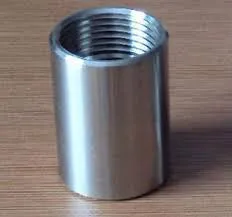-
Cangzhou Yulong Steel Co., Ltd.
-
Phone:
+86 13303177267 -
Email:
admin@ylsteelfittings.com
- English
- Arabic
- Italian
- Spanish
- Portuguese
- German
- kazakh
- Persian
- Greek
- French
- Russian
- Polish
- Thai
- Indonesian
- Vietnamese
- Zulu
- Korean
- Uzbek
- Hindi
- Serbian
- Malay
- Ukrainian
- Gujarati
- Haitian Creole
- hausa
- hawaiian
- Hebrew
- Miao
- Hungarian
- Icelandic
- igbo
- irish
- Japanese
- Javanese
- Kannada
- Khmer
- Rwandese
- Afrikaans
- Albanian
- Amharic
- Armenian
- Azerbaijani
- Basque
- Belarusian
- Bengali
- Bosnian
- Bulgarian
- Catalan
- Cebuano
- China
- China (Taiwan)
- Corsican
- Croatian
- Czech
- Danish
- Esperanto
- Estonian
- Finnish
- Frisian
- Galician
- Georgian
- Kurdish
- Kyrgyz
- Lao
- Latin
- Latvian
- Lithuanian
- Luxembourgish
- Macedonian
- Malgashi
- Malayalam
- Maltese
- Maori
- Marathi
- Mongolian
- Myanmar
- Nepali
- Norwegian
- Norwegian
- Occitan
- Pashto
- Dutch
- Punjabi
- Romanian
- Samoan
- Scottish Gaelic
- Sesotho
- Shona
- Sindhi
- Sinhala
- Slovak
- Slovenian
- Somali
- Sundanese
- Swahili
- Swedish
- Tagalog
- Tajik
- Tamil
- Tatar
- Telugu
- Turkish
- Turkmen
- Urdu
- Uighur
- Welsh
- Bantu
- Yiddish
- Yoruba

Nov . 10, 2024 23:43 Back to list
Exploring Various Types of Coupling in Systems Engineering and Their Applications
Understanding All Coupling Types in Mechanical Systems
In the realm of mechanical engineering, coupling plays a pivotal role in transmitting power and motion between various components. Couplings are devices used to connect two shafts together at their ends for the purpose of transmitting power. They are essential in many applications ranging from industrial machinery to automotive systems. This article explores the various types of couplings, their functions, and applications.
1. Rigid Couplings
Rigid couplings are straightforward devices that connect two shafts firmly without permitting any motion relative to one another. They are particularly effective for applications where precise alignment is crucial, such as in rotary machines where high precision is necessary. Rigid couplings can withstand high torque and are typically installed where axial motion is not present. However, they do not accommodate misalignment; thus, accurate shaft alignment is critical to avoid premature wear or failure.
2. Flexible Couplings
Conversely, flexible couplings allow for slight misalignments between connected shafts. These couplings are designed to accommodate angular, parallel, or axial misalignments, making them suitable for applications where precise alignment is challenging. They are often constructed from materials that allow for some degree of flex, such as rubber or urethane. Common types of flexible couplings include elastomeric couplings, gear couplings, and universal joints. Their ability to absorb shock loads and dampen vibrations makes them ideal for machinery that experiences fluctuating forces.
3. Oldham Couplings
Oldham couplings are a specific type of flexible coupling that allows for significant angular and parallel misalignment. This coupling consists of three components two hubs and a center disc that can slide within the hubs. The design permits a high degree of angular displacement while minimizing backlash, making them suitable for applications such as robotics and precision machinery.
all coupling types

Disc couplings utilize paired metal discs to connect shafts. They can handle high torque and are known for their ability to accommodate angular misalignment. The flexibility of the discs allows for some differential movement, which helps in mitigating the effects of vibrations. Disc couplings are commonly used in high-speed applications, including motors and generators, due to their low inertia and robust performance.
5. Gear Couplings
Gear couplings consist of two hubs, one connected to each shaft, which are joined by gear teeth. This design allows them to transmit high torque while compensating for angular misalignment. Gear couplings are particularly robust and are favored in heavy-duty applications where reliability and performance are paramount, such as in pumps and compressors.
6. Fluid Couplings
Fluid couplings rely on hydraulic principles to transmit power. They consist of an impeller and a turbine that allows for a smooth transfer of energy without direct mechanical contact. Fluid couplings are beneficial in applications requiring gradual power transmission, such as conveyors and fans, where sudden torque changes could lead to mechanical shock and damage.
7. Magnetic Couplings
These couplings utilize magnets to transmit torque between shafts without direct contact. As a result, they are ideal for applications where leakage could pose a problem, such as in chemical processing or food technology. They provide a unique advantage by eliminating wear and tear on mechanical components due to the absence of physical contact.
Conclusion
Understanding the various coupling types is essential for any mechanical engineer or technician seeking to optimize a system’s performance. Each coupling type has its specific advantages and is tailored to different applications and requirements. By selecting the appropriate coupling type, engineers can enhance the efficiency, reliability, and operational longevity of their mechanical systems. Whether one requires rigid coupling for precision or flexible types for misalignment, there is a tailored solution available to meet diverse engineering challenges.
Latest news
-
ANSI 150P SS304 SO FLANGE
NewsFeb.14,2025
-
ASTM A333GR6 STEEL PIPE
NewsJan.20,2025
-
ANSI B16.5 WELDING NECK FLANGE
NewsJan.15,2026
-
ANSI B16.5 SLIP-ON FLANGE
NewsApr.19,2024
-
SABS 1123 FLANGE
NewsJan.15,2025
-
DIN86044 PLATE FLANGE
NewsApr.19,2024
-
DIN2527 BLIND FLANGE
NewsApr.12,2024
-
JIS B2311 Butt-Welding Fittings LR/SR 45°/90° /180°Seamless/Weld
NewsApr.23,2024











